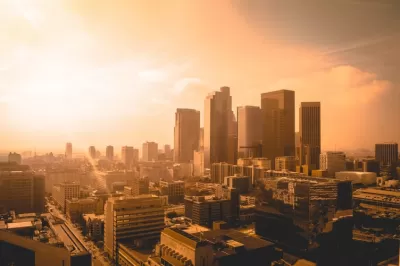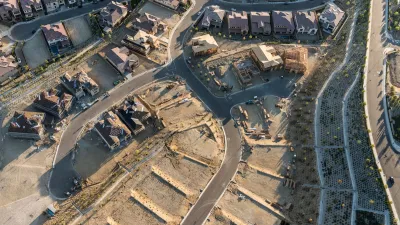The original "Blade Runner" takes place in the Los Angeles of November 2019. How does the film’s vision of the city compare with the present-day reality?

The 1982 film "Blade Runner" envisioned a Los Angeles of the future—this month, November 2019. The LAist staff takes a closer look at what Ridley Scott’s world looked like compared to real-life Los Angeles.
The movie version of the city depicts a dreary and smog-choked environment that no one talks about. "By contrast, the actual November 2019 is inundated with research, fear, conversation and controversy over the 'untold suffering' that climate change will bring."
And the demographics of the Blade Runner Los Angeles look a bit peculiar. It is, inexplicably, a city populated by Asian people wearing bamboo hats and carrying oil paper umbrellas, with few other people of color. "While Blade Runner doesn't nail the population breakdown, its instincts are right when it comes to its portrayal of a multicultural — and inequitable — future for L.A."
The article also looks at the flying cars, replicants, hyper-dense urban landscape, and housing of the sci-fi version of Los Angeles. While many of these features do not quite match up with Los Angeles as we know it, the influences behind these visions of the future and the ways they diverge from real life are interesting to consider.
FULL STORY: How The Dark Future Of Blade Runner's 2019 Los Angeles Looks In The Light Of Actual Today

Alabama: Trump Terminates Settlements for Black Communities Harmed By Raw Sewage
Trump deemed the landmark civil rights agreement “illegal DEI and environmental justice policy.”

Planetizen Federal Action Tracker
A weekly monitor of how Trump’s orders and actions are impacting planners and planning in America.

The 120 Year Old Tiny Home Villages That Sheltered San Francisco’s Earthquake Refugees
More than a century ago, San Francisco mobilized to house thousands of residents displaced by the 1906 earthquake. Could their strategy offer a model for the present?

In Both Crashes and Crime, Public Transportation is Far Safer than Driving
Contrary to popular assumptions, public transportation has far lower crash and crime rates than automobile travel. For safer communities, improve and encourage transit travel.

Report: Zoning Reforms Should Complement Nashville’s Ambitious Transit Plan
Without reform, restrictive zoning codes will limit the impact of the city’s planned transit expansion and could exclude some of the residents who depend on transit the most.

Judge Orders Release of Frozen IRA, IIJA Funding
The decision is a victory for environmental groups who charged that freezing funds for critical infrastructure and disaster response programs caused “real and irreparable harm” to communities.
Urban Design for Planners 1: Software Tools
This six-course series explores essential urban design concepts using open source software and equips planners with the tools they need to participate fully in the urban design process.
Planning for Universal Design
Learn the tools for implementing Universal Design in planning regulations.
Clanton & Associates, Inc.
Jessamine County Fiscal Court
Institute for Housing and Urban Development Studies (IHS)
City of Grandview
Harvard GSD Executive Education
Toledo-Lucas County Plan Commissions
Salt Lake City
NYU Wagner Graduate School of Public Service





























